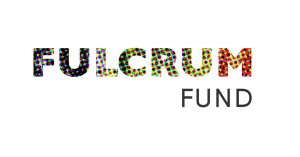Fish in Persian Gardens
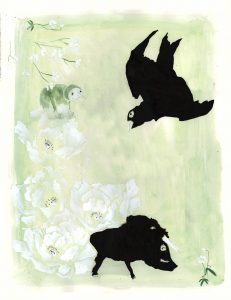
Fish in Persian Gardens
Extracts of Poetry and Literature as Revolt
Illustrations by Zahra Marwan
December 6, 2019 – December 25, 2019
OPENING RECEPTION: December 6, from 6 – 8 pm
With Performances at 7 by Cory McBride, Amir Raeisi, and Al Shammari.
Arabs have complacently considered themselves to be a people of poets, indeed, the people of poets. Poetry was the record of their lofty deeds, their claim to glory, their secret garden, their diwan.
Abdelfattah Kilito – Arabs and the Art of Storytelling
Sometimes when listening to a modern song from the Middle East, it turns out to be a 7th-century poem. There is a long tradition and pride in literature and poetry amongst the Arabs, Persians, Bedouins, Andalusians and cultural groups in between and through their expansions. Often attracting mass audiences from rural villages to sophisticated capital cities. Even in modern times, they continue to have an impact on popular culture. Where visuals come to life from language and text. It is a longstanding platform for people to openly critique or lament, to feel pride. There is also despotism and nationalism in the use of this tradition.
These illustrative works of poems are a reflection of the subversive ways in which people express their grief, nostalgia, love, and breaks in community s. Perhaps not explicitly for revolt, but irregularities and abstractions of it. The content of these illustrations stems directly from the language expressed. Whether they were exiled, killed, or appreciated for being headstrong, these pieces are also reflections of the fatigue associated with their fight.
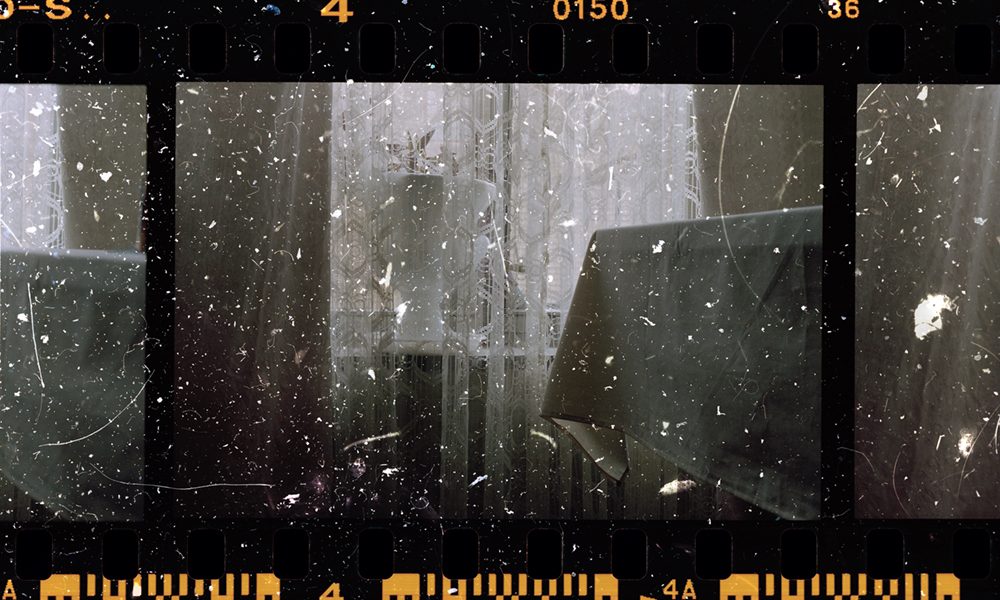
Subjectivity and Objectivity
Subjectivity and Objectivity
Fatemeh Baigmoradi
November 1 – 29, 2019
OPENING RECEPTION: November 1, from 6 – 8 pm
Aura is a quality integral to an artwork that cannot be communicated through mechanical reproduction – such as photography. The term was used by Walter Benjamin in his essay “The Work of Art in the Age of Mechanical Reproduction”. Photography, constantly, has been used to record the special and ordinary moments of
our life. Time has an aura. Each second is unique and non-repeatable. On the other hand, the way that our minds recall our past (memories) is like capturing them as a copy of the reality that doesn’t have the aura of reality.
I’ve been living with my parents in the very first house that I know for the first 18 years of my life. Then I moved to the other city but I’d used any chance to go back to see my parents and the house. Between 2008 and 2011, I had captured several photos of that space and my childhood trophies in that house. The house held a unique place in my
childhood, much as my mother and my father did. Objects and locations, which carry the weight of their histories, have aura for me. Now in the Age of digital photography and reproduction, I find my old negative and photos as an object, which contain history. They are objects from my past and the subject of these photos is so personal for me. Reality is not changeable but our memories can get unclear and defaced through the time. That’s how after years, two individuals may have the same memories from an event with different or even conflicted details. It seems our memories look like photographs that passage of time can affect them.
As a toddler, I was a devoted daydreamer. I took these photos around 10 years ago to attempt to revitalize my old cozy daydreaming atmosphere. After some specific stages in my life, my obsession with my past reduced somehow. Those moments are so far and untouchable as much as my favorite fiction books that I placed them under my bed in my parents’ house in Iran.
R U LOOKING?
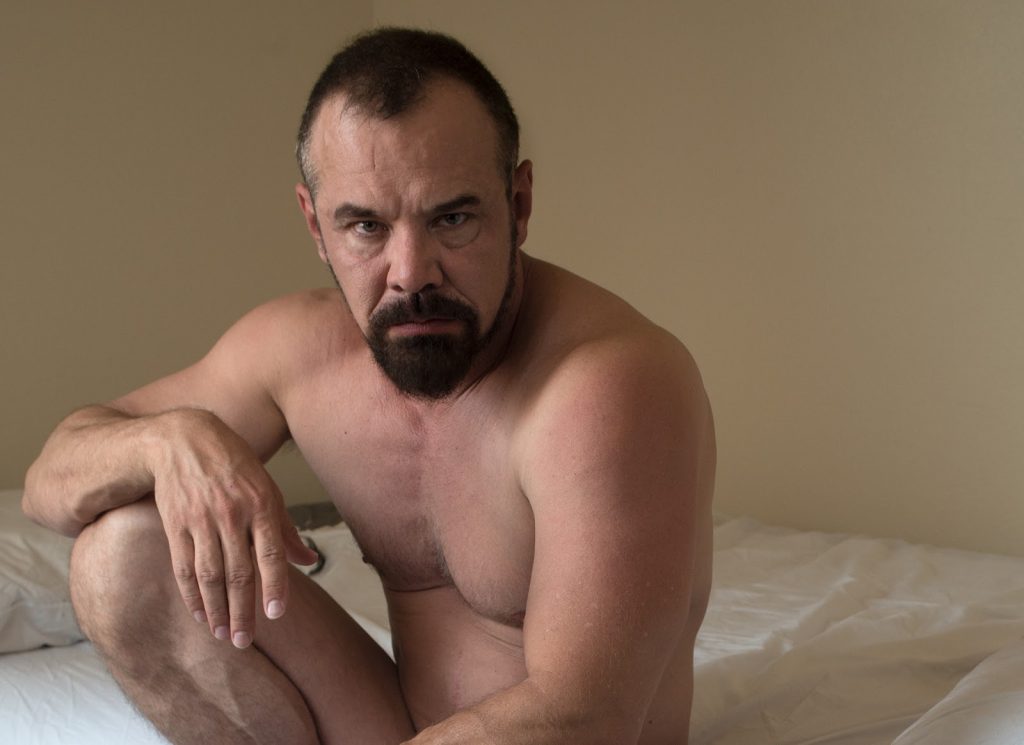
Apolo Gomez, Max Sargent from Men at Work, 2019
“R U LOOKING?”
Apolo Gomez & Max Woltman
October 4 – 25, 2019
OPENING RECEPTION: October 4, from 6 – 8 pm
Queer Draw & Dance (in conjunction with the Way OUT West Film Festival): Date to be announced
The photography of Apolo Gomez and Max Woltman explores sex, dislocation, and desire. Apps and websites may have changed the way gay men are approaching hooking up. Through documentation and portraiture, the exhibition “R U LOOKING?” Celebrates and questions these encounters.
Know your status! During the opening reception, free HIV testing will be provided by UNM Truman Health Services. UNM Truman Health Services uses the latest research and developments in medicine to enhance the lives of New Mexicans living with HIV. Their faculty and staff of health professionals are committed to pursuing the treatment goal of virus suppression and improved immune system with compassion, respect for human dignity and the right to privacy.
…Son, yáázh, mijo…
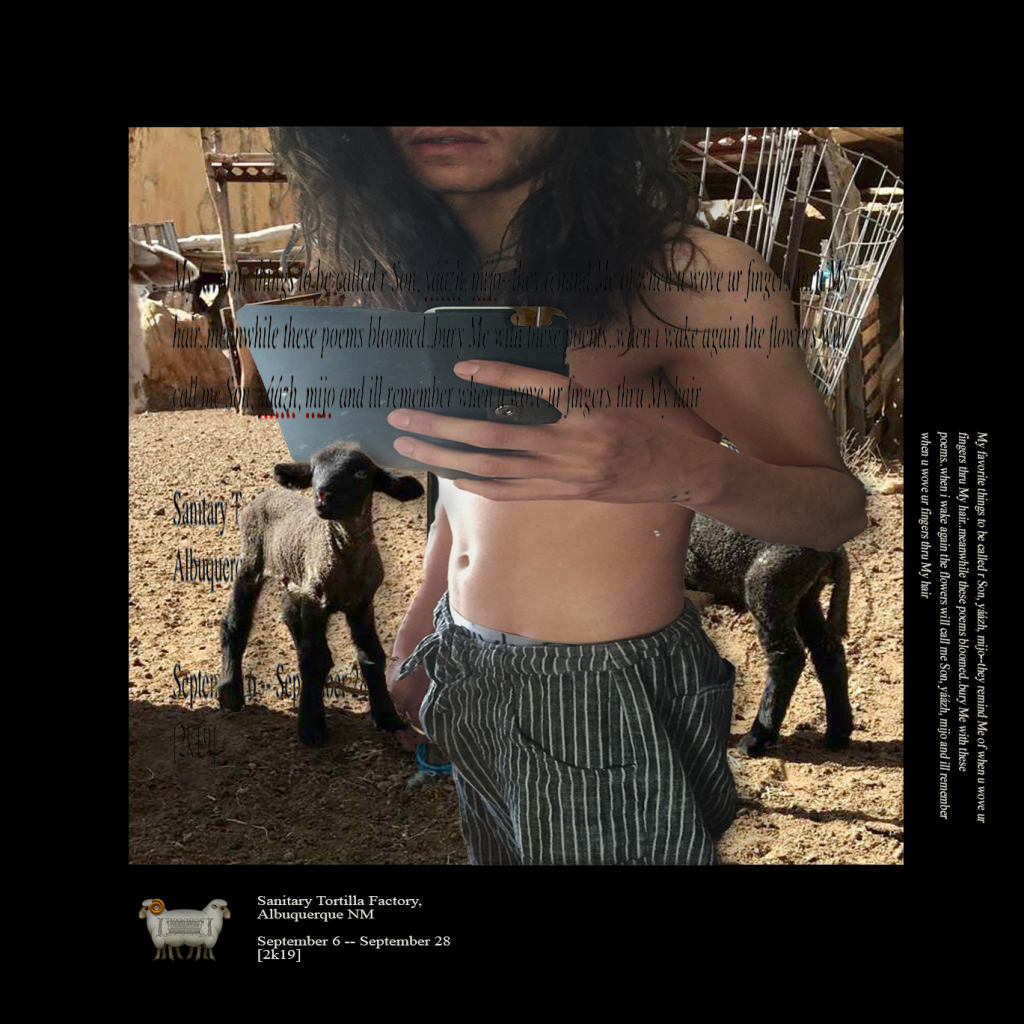
My favorite things to be called r Son, yáázh, mijo–they remind Me of when u wove ur fingers thru My hair..meanwhile these poems bloomed..bury Me with these poems..when i wake again the flowers will call me Son, yáázh, mijo and ill remember when u wove ur fingers thru My hair
Eric-Paul Riege
September 6 — September 27[2k19]
OPENING RECEPTION: September 6 from 6:00 – 8:00 pm
CLOSING RECEPTION & PERFORMANCE: September 27 from 6:00 – 8:00 pm
Where is My place to find solace? I think it lives in my process. My hands make make make and create create create to tell some sort of story that lets me know how much I love you. Where is My vulnerability and honesty lay? I think it lives in my actions. When my mind tells my body to move it’ll move. When my mind tells my body to see it’ll see. When you present a form of yourself to Me I trust myself enough to allow you in and see some form of empathy between us. I fell in love with you before we met and these objects materialize that. I thank you for creating these with Me.
Eric-Paul Riege (Diné) (b. 1994, Na’nízhoozhí, Gallup, New Mexico) is a weaver and fiber artist and outsider poet finding presence in his mind, body, and beliefs through performance, installation, woven sculpture, collage, and wearable art. For Riege his weavings pay homage and link him to generations of women weavers in his family and exist as living things that aid him in generating sanctuary spaces of welcome. Riege holds a BFA in Art Studio and Ecology from the University of New Mexico. His work has recently been exhibited in the SITElines.2018 Biennial at Site Santa Fe, NM, the Navajo Nation Museum in Window Rock AZ, the National Hispanic Cultural Center in Albuquerque, NM, and The Institute of Contemporary Art Miami in Miami, FL.
Black Hole/Atomic City (State of Decay)
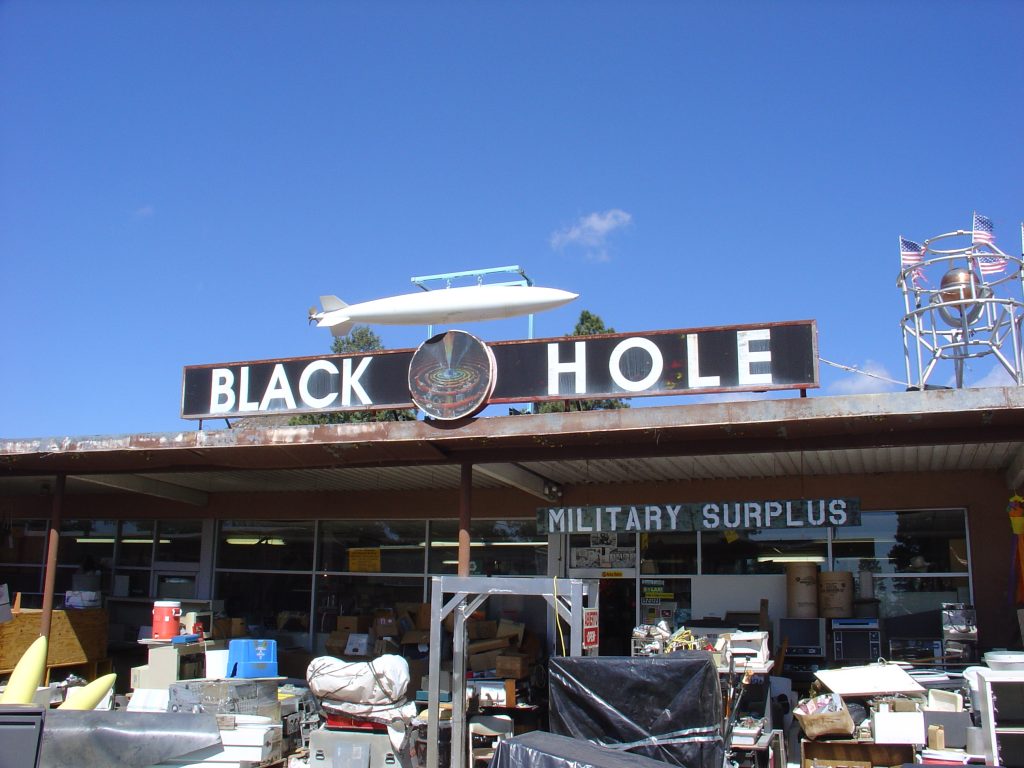
The Black Hole in Los Alamos, NM, 2009. Photo by Jeff Keyzer
Black Hole/Atomic City (State of Decay)
August 2 – 30, 2019
OPENING RECEPTION: August 2, 6-9pm
Black Hole/Atomic City (State of Decay) is an exhibition dedicated to alternative stories related to “the nuclear business” in New Mexico since the dawn of the Anthropocene/Trinity test near Tularosa in July 1945. The combined burden of nuclear byproducts and waste that decays over tens of thousands of years weighs heavily on New Mexico, a “national sacrifice zone.” The show will be on view until August 30.
Impacts that largely affect Indigenous and rural communities from nuclear weapons and their production in New Mexico and around the world, are not featured in the celebratory story of the Atomic Age promoted by Los Alamos, set for the commemoration in 2020 of the 75th Anniversary of the Trinity Test and the bombings of Hiroshima and Nagasaki, the first and only cities to be destroyed with atomic weapons.
What is the impact of the theft and decimation of sacred lands? How have involuntary radiation exposures from atomic explosions and contamination from mining and milling of uranium affected generations? What are the ongoing threats from transportation and storage of radioactive waste?
This will be one of numerous efforts to highlight alternative views of our nuclear world during the lead up to the Anniversary of the Nuclear Age. The Black Hole, a Los Alamos business known world-wide for recycling equipment and materials from the Los Alamos Scientific/National Laboratory, was owned by anti-nuclear activist Edward Grothus, who died in 2009. Artist and activist Barbara Grothus is the lead organizer of the project.
Artists include: Josh Atlas, Brandi Beckett, Mitch Berg, Anna Bush Crews, Sabrina Gaskill, Barbara Grothus, Sheri Inez deLopaz Kotowski, Sto Len, Melanie Mills, Santiago Perez, Thomas Powell, Rachele Riley, Yasuyo Tanaka, Jessi Walsh, Nora Wendl
This exhibition was made possible in part by the Fulcrum Fund. The Fulcrum Fund is an annual grant program, created and administered by 516 ARTS as a partner in the Regional Regranting Program of The Andy Warhol Foundation for the Visual Arts.
